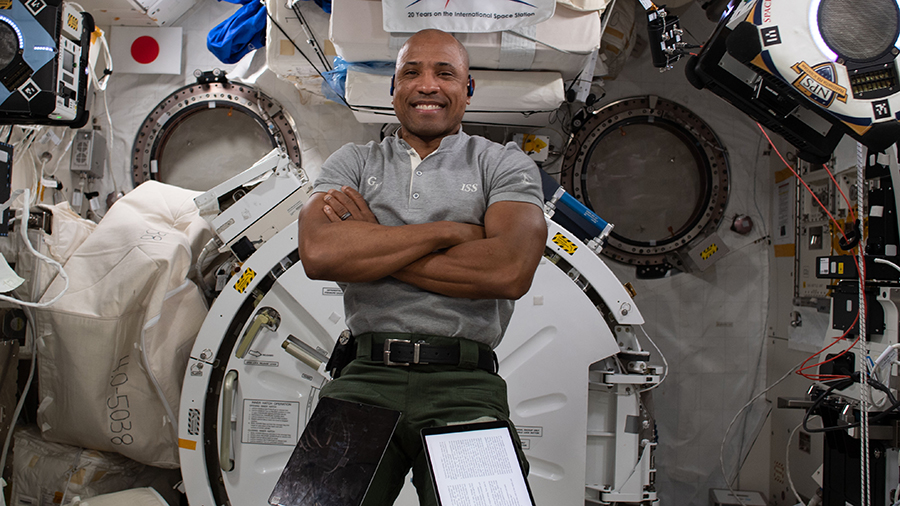Human Research on Station Informing Health in Space and on Earth

Human research is key aboard the International Space Station as NASA and its international partners learn to keep crews healthy during long-term exploration missions. The station hosts a variety of advanced space science hardware enabling these unique experiments and more in the weightless environment of the orbiting lab.
Today aboard the orbiting lab, Expedition 64 Flight Engineers Kate Rubins and Victor Glover collected their blood, urine, and saliva samples, and stowed them for later analysis. Rubins also analyzed white blood cells for the HemoCue study that is demonstrating how to quickly monitor and diagnose crew health conditions, including viral infections and radiation exposure, aboard spacecraft.
NASA Flight Engineer Michael Hopkins spent Wednesday installing and powering up the new KEyence Research Microscope Testbed (KERMIT) microscope. KERMIT will allow astronauts and scientists to view and analyze biological and physical samples both on the station and remotely from the ground. JAXA (Japan Aerospace Exploration Agency) astronaut Soichi Noguchi worked on the Confocal Space Microscope, which provides fluorescence images of biological samples, during the morning.
The station’s computer network is in the process of being upgraded as Flight Engineer Shannon Walker of NASA spent the day routing new ethernet cables inside the Unity module. Glover assisted station Commander Sergey Ryzhikov and Roscosmos Flight Engineer Sergey Kud-Sverchkov setting up a cinematic virtual reality camera to film the cosmonauts working in the station’s Russian segment.
Ryzhikov was back on plasma physics research Wednesday, downloading data and swapping the gas supply from neon to argon for the study, observing plasma dust crystals in microgravity. Kud-Sverchkov serviced the ventilation system replacing air ducts inside the Rassvet module.
from Space Station https://ift.tt/3tPOQjz
Comments
Post a Comment